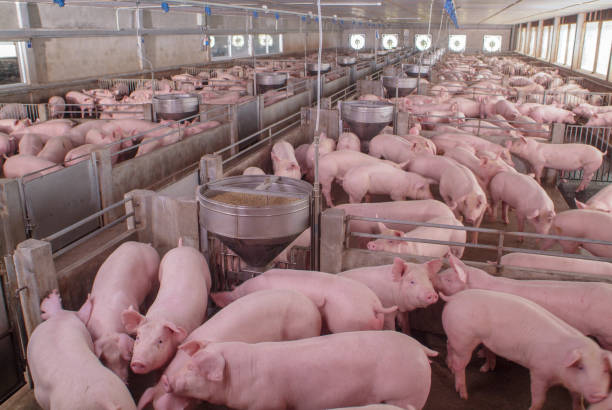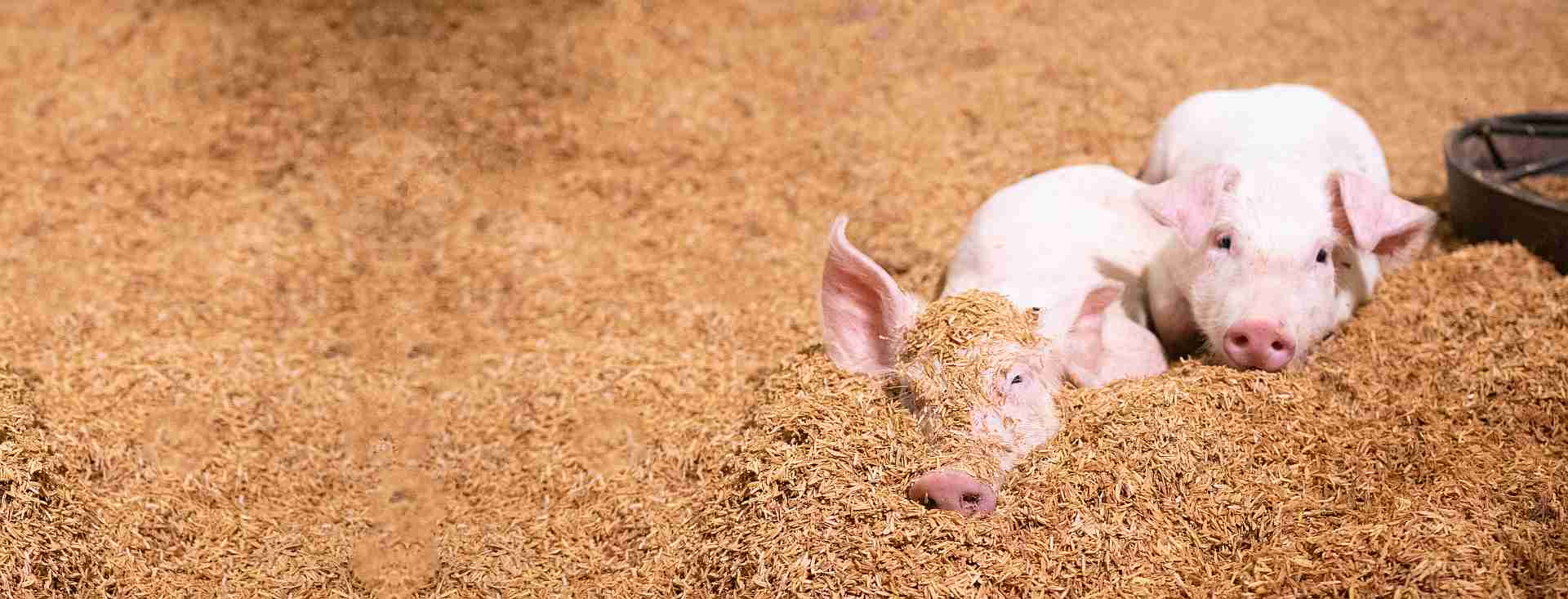Managing a piggery farm requires dedication, knowledge, and proper planning to ensure the health and productivity of the pigs.
Whether you're a seasoned farmer or considering venturing into pig farming for the first time, understanding key management practices is crucial for success.

Piggery farm management guide
Piggery farming is the practice of raising pigs for meat, known as pork. Here are some key aspects of piggery farming:
Benefits:
1. High demand for pork
2. Fast growth rate of pigs (5-6 months to market)
3. High reproductive rate of pigs (up to 12 piglets per litter)
4. Can be raised on small or large scales
Requirements for managing piggery farm
1. Land and housing (pens or sheds)
2. Feed (commercial or homemade)
3. Water and sanitation systems
4. Breeding stock (pigs)
5. Veterinary care and health management
Here are the requirements for piggery farming:
Land and Housing:
1. Suitable land for pig pens or sheds
2. Adequate space for pigs to move around (at least 2-3 square meters per pig)
3. Well-ventilated and dry housing
4. Fencing to prevent escape and predator entry
Feed and Water:
1. Access to clean water
2. Nutritious feed (commercial or homemade)
3. Feeding troughs and waterers
4. Feed storage facilities
Pig feeds
Pig feeds are nutritionally balanced diets formulated to meet the specific needs of pigs at various stages of growth and production. Here are some common types of pig feeds:
1. Starter feeds: For piglets from weaning to 6-8 weeks old.
2. Grower feeds: For pigs from 6-8 weeks to 12-14 weeks old.
3. Finisher feeds: For pigs from 12-14 weeks to market weight.
4. Sow feeds: For pregnant or lactating sows.
5. Breeder feeds: For boars and sows used for breeding.
Pig feeds typically contain:
1. Grains: Corn, wheat, barley, or sorghum.
2. Protein sources: Soybean meal, fish meal, or meat and bone meal.
3. Fiber sources: Wheat bran, corn cobs, or sugarcane bagasse.
4. Vitamins and minerals: Added to meet nutritional requirements.
5. Additives: Antibiotics, probiotics, or enzymes to enhance growth and health.
Some popular pig feed brands include:
1. Purina
2. Nutrena
3. Kent
4. Monsanto
5. Cargill
6. Alltech
7. Biomin
8. DSM
9. Evonik
10. Local feed mills
It's essential to consult with a veterinarian or nutritionist to determine the best feed for your pigs based on factors like age, weight, and production goals.
Breeding Stock:
1. Healthy breeding pigs (boars and sows)
2. Suitable breed for your climate and market
Labor and Management:
Health and Hygiene:
Common diseases in pigs and their treatments

Types of Pig Farming:
1. Intensive systems (indoor, confinement)
2. Extensive systems (outdoor, free-range)
3. Semi-intensive systems (combination of indoor and outdoor)
Pig Breeds:
1. Large White
2. Duroc
3. Hampshire
4. Landrace
5. Pietrain
Challenges:
1. Disease management
2. Feed costs and availability
3. Market fluctuations
4. Environmental impact (manure management)
5. Animal welfare concerns
Pork meat markets in Zambia
Here are some potential places to sell pork meat in Zambia:
1. Local Butcheries: Partner with local butcheries to supply them with pork meat.
2. Supermarkets: Major supermarkets like Shoprite, Pick n Pay, and Spar may be interested in buying pork meat from you.
3. Markets: Sell directly to consumers at markets like Lusaka's Soweto Market, Kabwata Market, or Chilenje Market.
4. Hotels and Restaurants: Supply pork meat to hotels, restaurants, and lodges, especially those serving local cuisine.
5. Wholesale Buyers: Reach out to wholesale buyers who purchase meat for resale to other businesses.
6. Online Platforms: Utilize online marketplaces like Facebook Marketplace, WhatsApp groups, or local online forums to sell pork meat directly to consumers.
7. Pork Processing Plants: Consider selling to pork processing plants that produce value-added products like sausages, bacon, or ham.
8. Farmers' Markets: Participate in farmers' markets, which offer a platform for direct sales to consumers.
9. Community Centers: Sell pork meat at community centers, especially in areas with high demand.
10. Direct Sales: Establish relationships with individual customers and sell directly to them.
Remember to ensure compliance with local regulations, health standards, and food safety guidelines when selling pork meat in Zambia.
Best Practices for Piggery Farmers
1. Proper housing and sanitation
2. Regular veterinary care
3. Balanced nutrition
4. Breeding program management
5. Record keeping and monitoring
To keep pigs healthy, follow these best practices:
1. Provide clean water: Ensure access to fresh, clean water at all times.
2. Nutritious feed: Offer a balanced diet that meets pigs' nutritional needs.
3. Clean housing: Maintain clean, dry, and well-ventilated living conditions.
4. Health checks: Regularly monitor pigs for signs of illness or stress.
5. Vaccinations: Implement a vaccination program to protect against diseases.
6. Parasite control: Implement measures to control internal and external parasites.
7. Biosecurity: Establish biosecurity protocols to prevent disease entry.
8. Stress reduction: Minimize stress through gentle handling and adequate space.
9. Regular veterinary care: Consult a veterinarian for regular check-ups and advice.
10. Keep records: Maintain accurate records of health, feed, and veterinary care.
11. Provide adequate space: Ensure sufficient space for pigs to move and exercise.
12. Monitor temperature: Keep pigs in a comfortable temperature range (10-25°C).
13. Provide shelter: Offer shelter from wind, rain, and sun.
14. Manage manure: Implement proper manure management to prevent disease.
15. Stay informed: Stay up-to-date with the latest health advice and research.
By following these guidelines, you can help keep your pigs healthy and thriving.
Summary
Successful piggery farm management requires a comprehensive understanding of housing, nutrition, healthcare, breeding, waste management, and marketing.
By implementing these key management practices, farmers can ensure the well-being of their pigs and the long-term success of their piggery farm.



